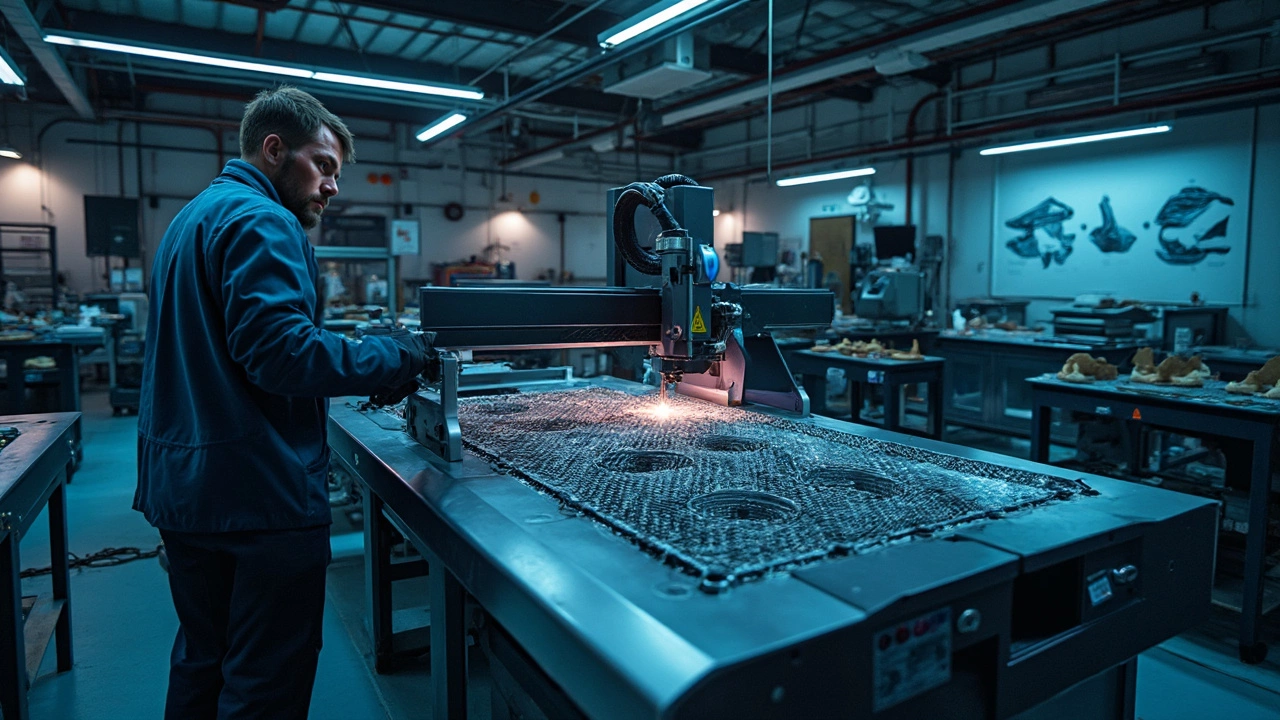Carbon Fiber Car Parts – What You Need to Know
If you’ve ever admired a sleek spoiler or a matte‑black hood on a sports car, odds are carbon fiber was behind the look. It’s cheap‑talk for a super‑strong, ultra‑light material that makes your ride feel faster without adding weight. Below you’ll get the basics, buying tips, and simple care tricks so you can add carbon fiber without any guesswork.
Why Carbon Fiber Beats the Rest
Carbon fiber is basically tiny strands of carbon woven together and set in resin. The result is a panel that’s up to 70% lighter than steel but just as stiff. Less weight means better handling, quicker acceleration, and lower fuel use. Plus, the woven pattern gives a high‑tech look that turns heads at the stoplight.
Another win is durability. Unlike paint, carbon fiber won’t chip or fade; it resists UV and chemicals. That makes it perfect for exterior parts like splitters, diffusers, and roof wraps, as well as interior upgrades such as shift knobs or trim pieces.
Choosing Real Carbon Fiber
Not every “carbon fiber” part is genuine. Some manufacturers print a carbon‑look onto plastic to save money. Here’s how to spot the real deal:
- Weight: Genuine carbon feels light. If a part feels heavy, it’s likely plastic.
- Texture: Run your finger over the surface. Real carbon has a distinct weave; printed copies feel smooth.
- Price: Expect to pay a bit more. If a $30 carbon hood is on sale, double‑check it.
- Seller reputation: Buy from shops that specialize in performance parts or have good reviews.
When you find a trusted source, look for parts that match your car’s make and model. A carbon fiber mirror cover that fits perfectly will look better and install easier than a generic piece that needs filing.
Installation Made Easy
Most carbon fiber accessories are bolt‑on. That means you don’t need professional welding or special tools—just the basic wrenches that came with your car. Follow these steps:
- Clean the mounting area with alcohol to remove grease.
- Check the fit without bolts; make sure the holes align.
- Use the original bolts if they’re included; if not, match the thread size.
- Tighten to spec (usually a few foot‑pounds). Overtightening can crack the resin.
- Give the part a final wipe to remove fingerprints.
For larger pieces like a carbon splitter, you might need a second pair of hands. A friend can hold the part while you line up the bolts, saving you a trip to the shop.
Keeping Carbon Fiber Looking Fresh
Carbon fiber loves a little love. Wash it with mild soap and water; avoid harsh chemicals that can eat the resin. If the weave looks dull after a few washes, lightly polish with a non‑abrasive automotive polish. Never use a pressure washer directly on a carbon part – the high pressure can force water between the fibers and cause delamination over time.
Store removable carbon pieces in a dry, shaded place. Sunlight can degrade resin after many years, so a garage shelf is ideal.
That’s it – with these basics you can confidently pick, install, and care for carbon fiber upgrades. Your car will feel lighter, look sharper, and stand out from the crowd without the headache of cheap imitations.

Does Carbon Fiber Weaken With Age? Long-Term Strength and Durability Explained
Curious about whether carbon fiber gets weaker as it ages? This article digs deep into the science behind carbon fiber’s durability, how aging can affect its strength, and what owners can do to keep it strong for years. Discover key facts, real-world examples, and maintenance tips you won't find anywhere else. If you own a bike, car, or gear made from carbon fiber, you'll want to know what happens to it over time.

What Can Ruin Carbon Fiber Spoilers? The Hidden Risks You Need to Know
Carbon fiber spoilers look awesome and make your ride stand out, but they're not invincible. Learn about the real dangers that can ruin these pricey car mods, from daily driving mistakes to sneaky threats like UV rays and cleaning chemicals. Spot warning signs before it's too late, and find out how to make your carbon fiber last. Whether you're a car enthusiast or just want your spoiler to keep turning heads, you'll get practical tips about staying ahead of damage.

What Happens if Carbon Fiber Gets Wet? Understanding the Risks for Your Spoiler
Wondering if rain or car washes will mess up your carbon fiber spoiler? This article will explain how carbon fiber reacts to getting wet, bust common myths, and show you what actually matters when it comes to moisture. Get useful maintenance tips and learn how to spot real problems before they cost you money. Perfect for anyone serious about keeping their car sharp and clean.

Can a 10W Laser Cut Carbon Fiber? Unpacking the Myths
Wondering if a 10W laser can tackle carbon fiber? It's not as simple as it sounds. The power and precision of the laser, along with the properties of carbon fiber, play critical roles. Whether you're in the spoiler-making business or just curious about laser cutting's capabilities, you'll want to know the ins and outs of how these elements interact. Get the lowdown on what's feasible and what's not.

Understanding the Impact of Carbon Fiber in Automotive Applications
Carbon fiber is a popular material in the automotive industry, especially for spoilers, due to its strength and lightweight nature. However, there are certain drawbacks associated with its use that need to be considered. These include environmental concerns during production, costs, and potential safety implications. Understanding these factors can help consumers and manufacturers make informed decisions regarding the use of carbon fiber in vehicles.